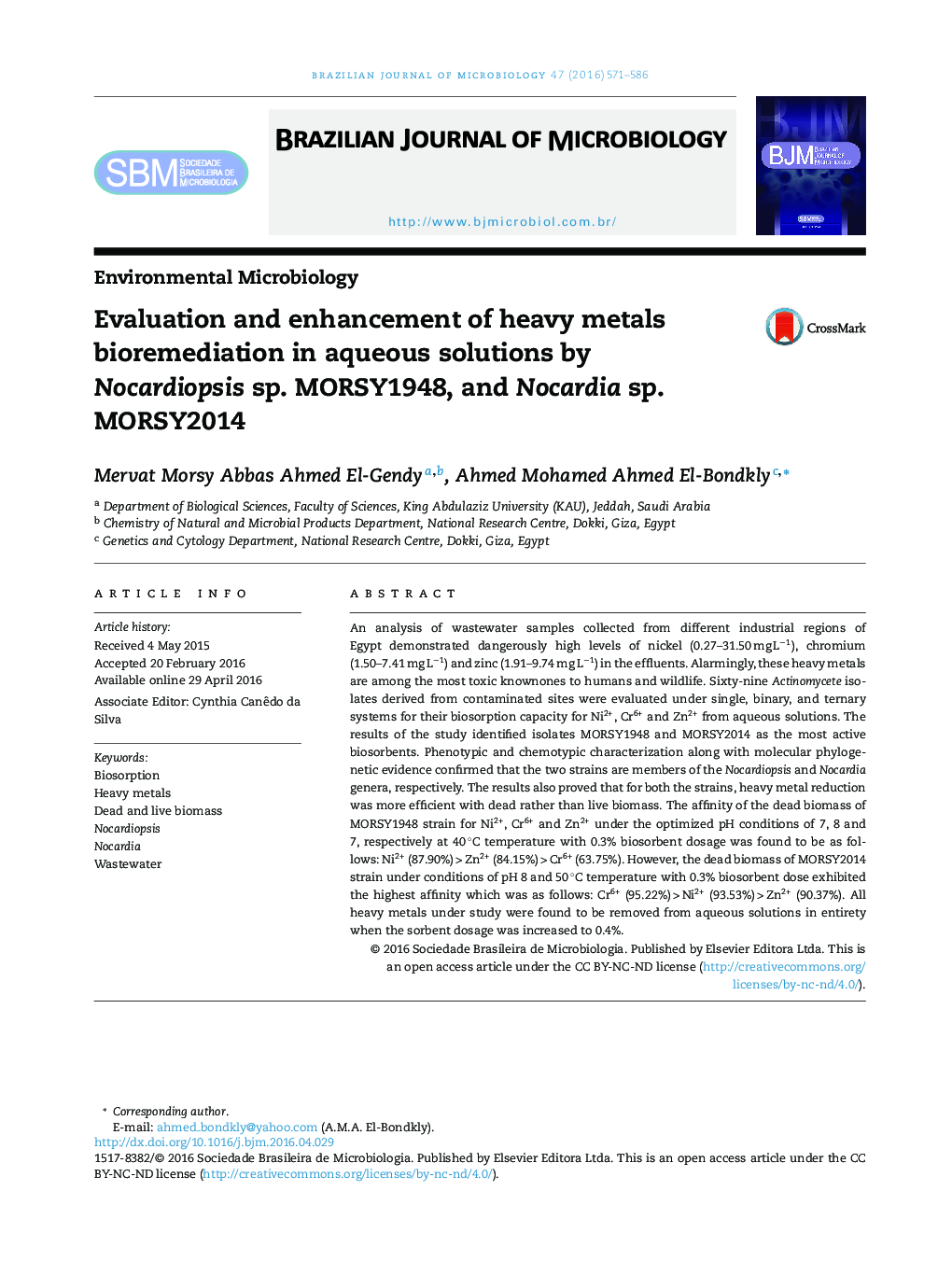| Article ID | Journal | Published Year | Pages | File Type |
|---|---|---|---|---|
| 4356685 | Brazilian Journal of Microbiology | 2016 | 16 Pages |
An analysis of wastewater samples collected from different industrial regions of Egypt demonstrated dangerously high levels of nickel (0.27–31.50 mg L−1), chromium (1.50–7.41 mg L−1) and zinc (1.91–9.74 mg L−1) in the effluents. Alarmingly, these heavy metals are among the most toxic knownones to humans and wildlife. Sixty-nine Actinomycete isolates derived from contaminated sites were evaluated under single, binary, and ternary systems for their biosorption capacity for Ni2+, Cr6+ and Zn2+ from aqueous solutions. The results of the study identified isolates MORSY1948 and MORSY2014 as the most active biosorbents. Phenotypic and chemotypic characterization along with molecular phylogenetic evidence confirmed that the two strains are members of the Nocardiopsis and Nocardia genera, respectively. The results also proved that for both the strains, heavy metal reduction was more efficient with dead rather than live biomass. The affinity of the dead biomass of MORSY1948 strain for Ni2+, Cr6+ and Zn2+ under the optimized pH conditions of 7, 8 and 7, respectively at 40 °C temperature with 0.3% biosorbent dosage was found to be as follows: Ni2+ (87.90%) > Zn2+ (84.15%) > Cr6+ (63.75%). However, the dead biomass of MORSY2014 strain under conditions of pH 8 and 50 °C temperature with 0.3% biosorbent dose exhibited the highest affinity which was as follows: Cr6+ (95.22%) > Ni2+ (93.53%) > Zn2+ (90.37%). All heavy metals under study were found to be removed from aqueous solutions in entirety when the sorbent dosage was increased to 0.4%.
